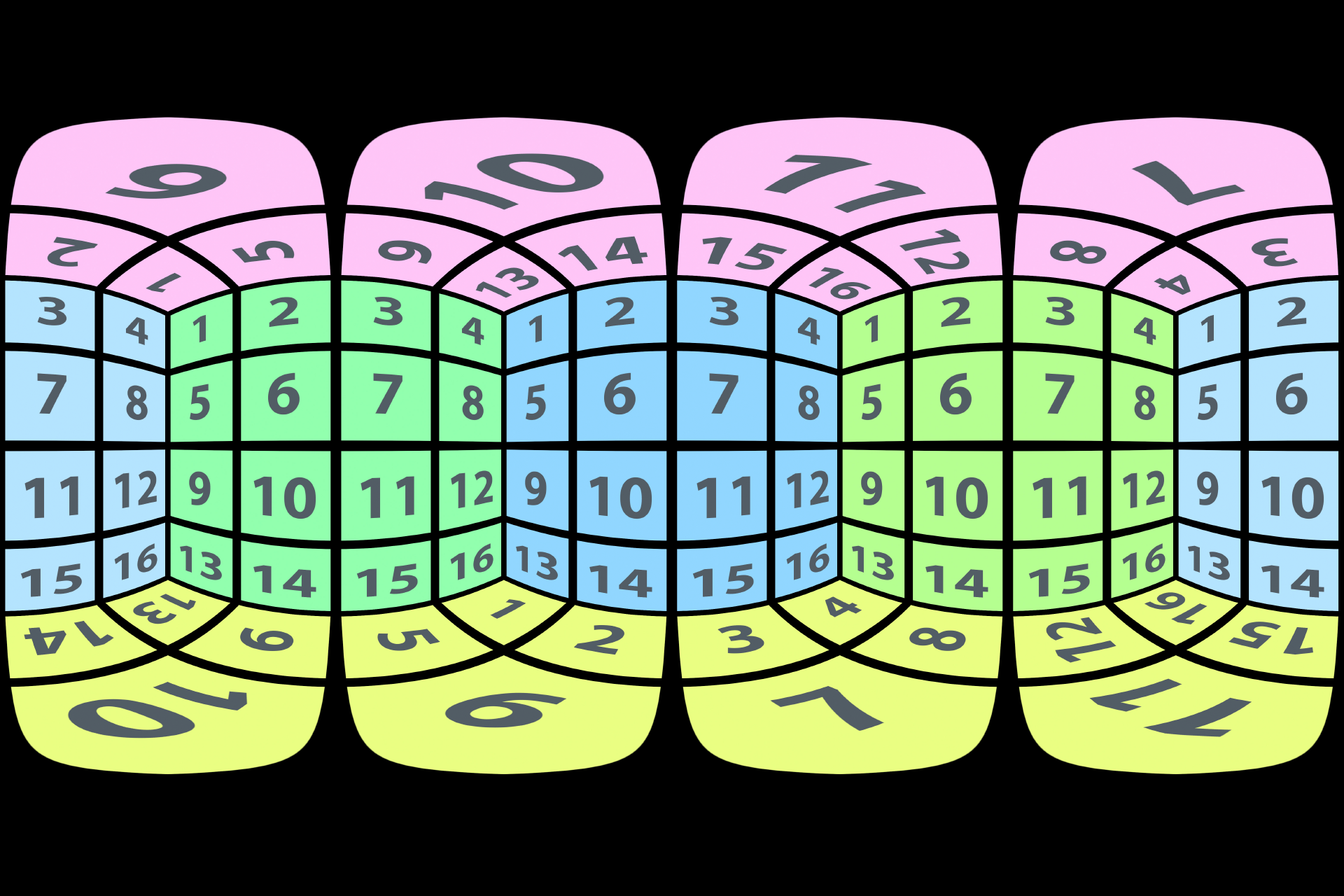1:1 What is equirectangular projection mapping?
Example of equirectangular map grid locations ©New Realities Lab 2024
Equirectangular projection mapping is a technique commonly used in the realm of immersive content creation, particularly in the fields of virtual reality (VR) and 360° video production. This method plays a crucial role in transforming spherical imagery into a format that can be accurately displayed on flat surfaces, enabling immersive experiences for users.
At its core, equirectangular projection is a mapping technique that represents the entire surface of a sphere onto a flat plane, creating a rectangular image. This projection is specifically designed to cover the entire field of view in all directions, capturing a panoramic view that can be navigated in a virtual environment.
Example of equirectangular grid overlayed on Canary Wharf 360° photograph ©New Realities Lab 2024
The term "equirectangular" is derived from the fact that the width-to-height ratio of the resulting image is 2:1. In other words, the horizontal extent is twice the vertical extent. This specific ratio makes it easy to map spherical content onto a flat surface, facilitating the creation and distribution of immersive content.
By Justin Kunimune - Own work, CC BY-SA 4.0, https://commons.wikimedia.org/w/index.php?curid=66467577
*Remember using this “un-wrapping” technique comes with distortion attributes we need to remember when using text in our creations. As shown above the heat spot deformity clearly show us where distortion will occur in our scene.
Source - https://en.wikipedia.org/wiki/Tissot%27s_indicatrix
One primary application of equirectangular projection mapping is in 360° content creation. When capturing images or videos with a 360° camera, the raw output is typically in equirectangular format. This format preserves the entire spherical panorama, making it compatible with online platforms, and various immersive spaces.
You may have scene this type of “un-wrapping” technique before with the Mercator map projection, this however uses a slightly different technique than equirectangular, as the Mercator projection preserves the shape and direction of small features, but distorts the area and distance of large regions.
In the realm of immersive classrooms and educational content, equirectangular projection plays a pivotal role. Educators and content creators can use this technique to develop immersive lessons and experiences that transport learners to virtual environments. Whether exploring historical landmarks, scientific phenomena, or cultural sites, equirectangular projection allows for a seamless and distortion-free presentation.
TOP TIP: In the below example on YouTube we get to clearly see in the preview thumbnail how media players store the video in a FLAT unwrapped format, and when we press play the player wraps the flat image into an immersive sphere.
Educational lesson example: NASA’s Commercial Crew Program VR 360 Tour, NASA STEM Engagement Specialist Rachel Power gives you an overview of the astronaut training required for living and working on the International Space Station. This video is a 360° immersive tour of the facilities inside Johnson Space Centre.
The process of creating content using equirectangular projection involves specialized software for stitching and editing. After capturing the spherical imagery, creators use these tools to ensure a smooth transition from the curved to flat format. This meticulous process ensures that when learners engage with 360° content they experience a cohesive and immersive environment.
A great place to start making content is by buying a 360° camera which come with really simple editing software, we recommend a good starter camera as - Buy X3 - Waterproof 360 Action Camera - Insta360
In conclusion, equirectangular projection mapping is a foundational aspect of immersive content creation, serving as the bridge between spherical capture and flat display. This technique enables the development of captivating educational experiences, allowing learners to explore and interact with virtual worlds. As technology continues to advance, equirectangular projection remains a key tool for shaping the future of immersive learning and virtual experiences.



